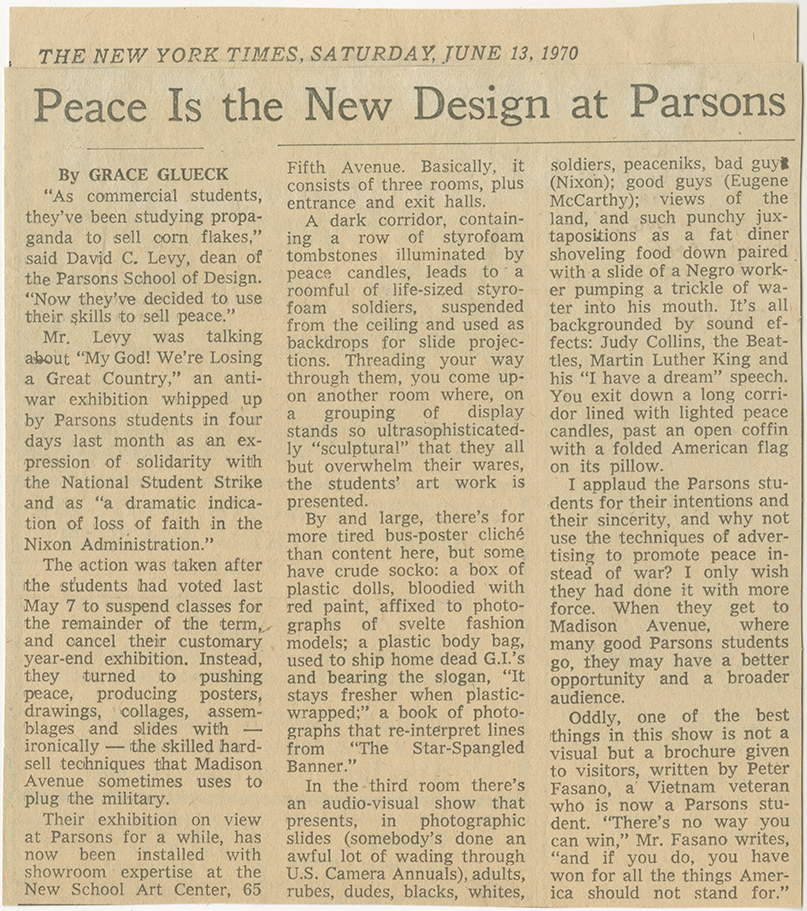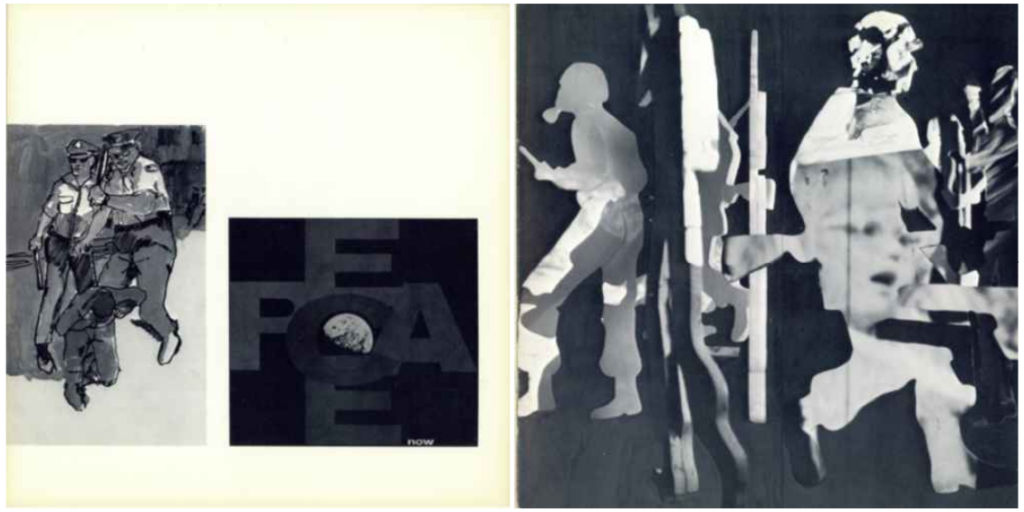MY GOD! WE’RE LOSING A GREAT COUNTRY Chronology
1969
The New School for Social Research celebrates its fiftieth anniversary. Its Graduate Faculty has only recently moved from the iconic Joseph Urban building on 12th Street, and its 11th Street extension, to a new building at 65 Fifth Avenue, formerly Lane’s Department Store. The campus of the New School is now divided between two locations. The following February, the school will expand further in a merger with Parsons.

April 30, 1970
Nixon announces on television that the U.S. has begun incursions into Cambodia to clear out “major enemy sanctuaries.” He had been elected in 1968 on a promise to end the Vietnam War. In 1969, the killings by U.S. soldiers of unarmed civilians in the My Lai massacre had come to light and a new draft lottery was instituted creating further opposition. However, troop withdrawals were believed to be underway by 1969. The Cambodian incursion is seen as a betrayal and protests escalate across the country.
May 4, 1970: Ohio National Guardsmen open fire at unarmed students at Kent State University. Four are killed and nine wounded. Some were protesters and others simply on their way to classes. John Filo’s Pulitzer Prize winning photograph of a young woman, Mary Ann Vecchio, kneeling over the body of Jeffrey Miller becomes the iconic symbol of the killings. Campuses across the country erupt in response.
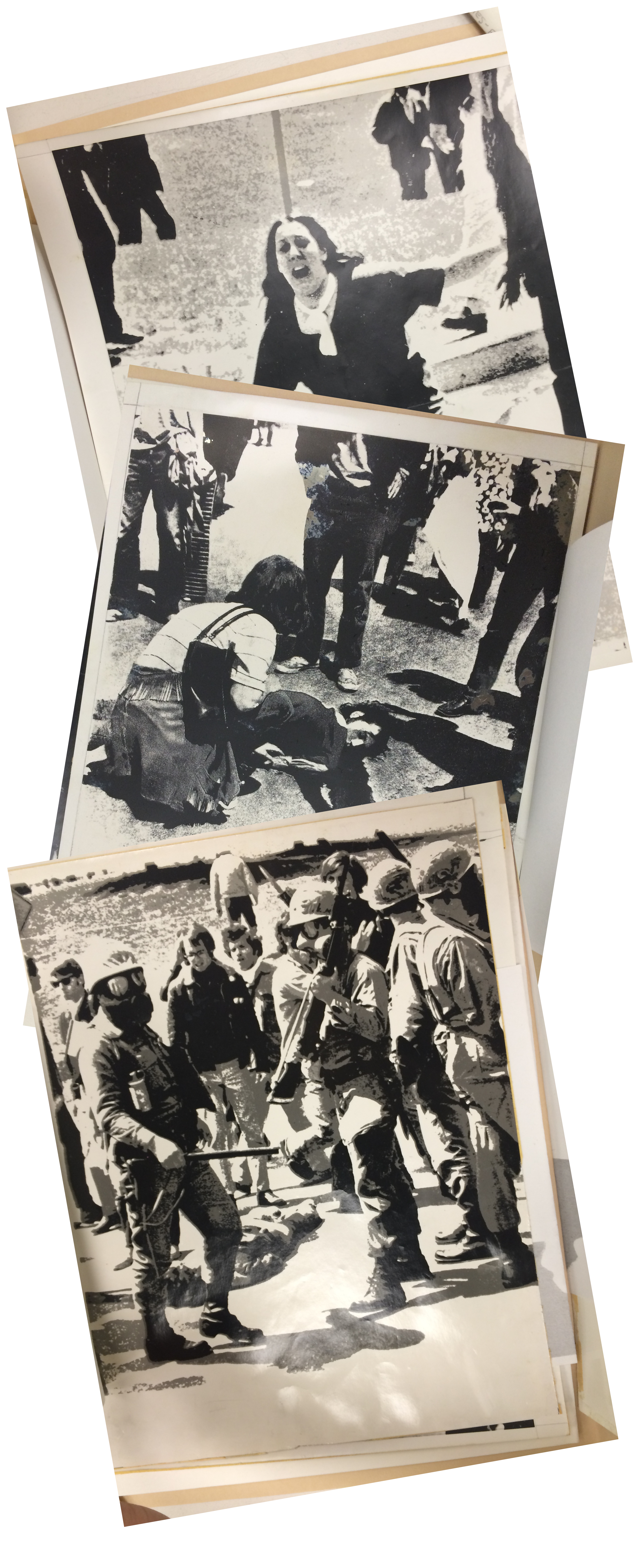
May 4-7, 1970
May 4: An informal steering committee of students at The New School votes to suspend normal university business, including classes.
May 5: The Graduate Faculty at The New School passes a resolution supporting the strike and in solidarity with the students. President Everett issues a statement shortly thereafter in support and suspends classes until May 9.
May 7: Uptown, Parsons students vote to suspend classes for the rest of the term in solidarity with the National Student Strike and “as a dramatic indication of the loss of faith in both the credibility and morality of the Nixon administration.” Downtown, at The New School, in a mass meeting, students vote to extend the strike to the end of the semester.
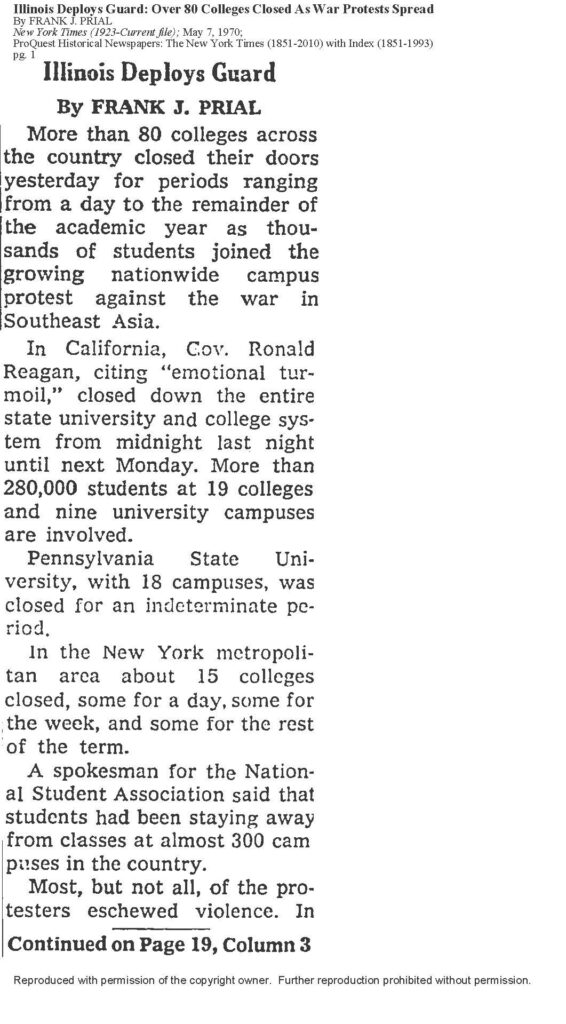
May 4- 11, 1970
Students, faculty and administration of The New School act in concert for the first week after the Kent State shootings. The 5th Avenue building is designated the regional work stoppage headquarters by the National Student Strike Committee. It is abuzz with activity: Meetings are held, flyers printed, music plays, labor organizers hold rallies, and resolutions passed. High school students pour in from all over the city to join in the protests. “If you want to keep cool, go to the beach or the New School,” goes a popular slogan. In the lobby are caricatures of Nixon, Vice President Agnew and Ellsworth Bunker, ambassador to South Vietnam, a member of The New School’s board of trustees and a Vietnam hawk. A metal sculpture in the lobby with an indeterminate head bears a sign: “We are sad but the time for gargoyles has passed.”
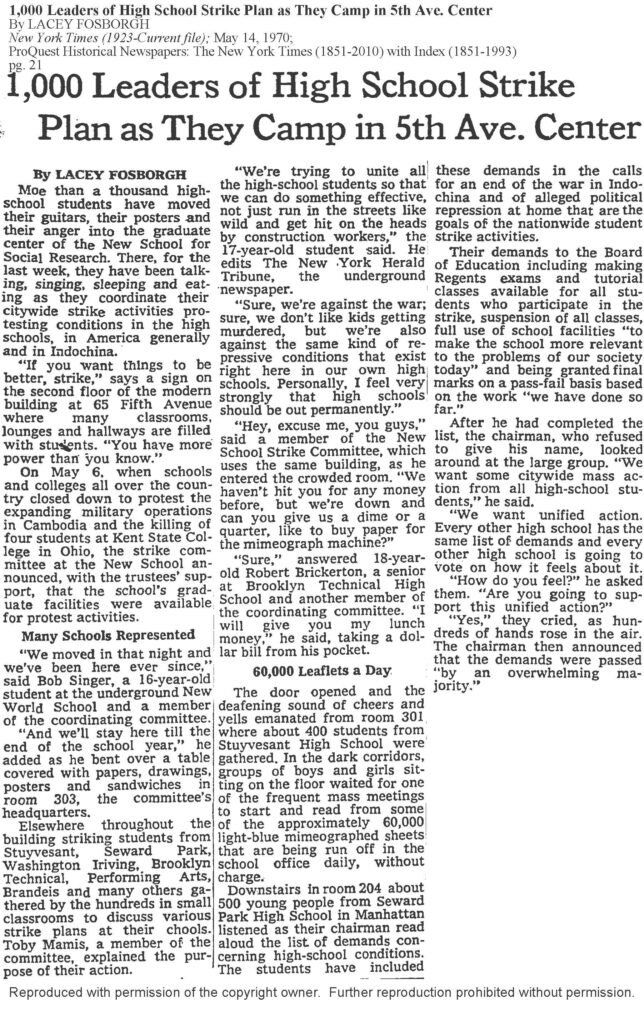
May 4- 11, 1970
In the aftermath of the shootings, students at Parsons, some of whom had been working on their senior show, gather in the vast auditorium space of their building to discuss what they should do. Recalling this time, David Levy, then Dean of Parsons, says he reminded them that unlike other students in the country, they had spent two years “learning to be propagandists” and urged them to use their skills: “Don’t go out and sell Corn Flakes, sell ideas.” And so, the exhibition is conceived, the title taken from an exclamation of one of the members of the organizing committee.

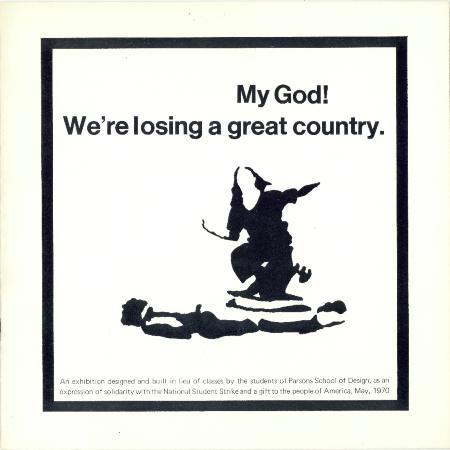
1970
May 4- 11, 1970
The installation fills the entire floor of the building, a former truck garage of Bloomingdales. Students pool funds to buy Nixon a round-trip airline ticket and include it with their invitation. When the White House declines and returns the ticket, it is blown up into a 7-foot poster. Jane Snyder, organizer of the graphic peace offensive said, “ We have more unity in this school than there’s ever been.”
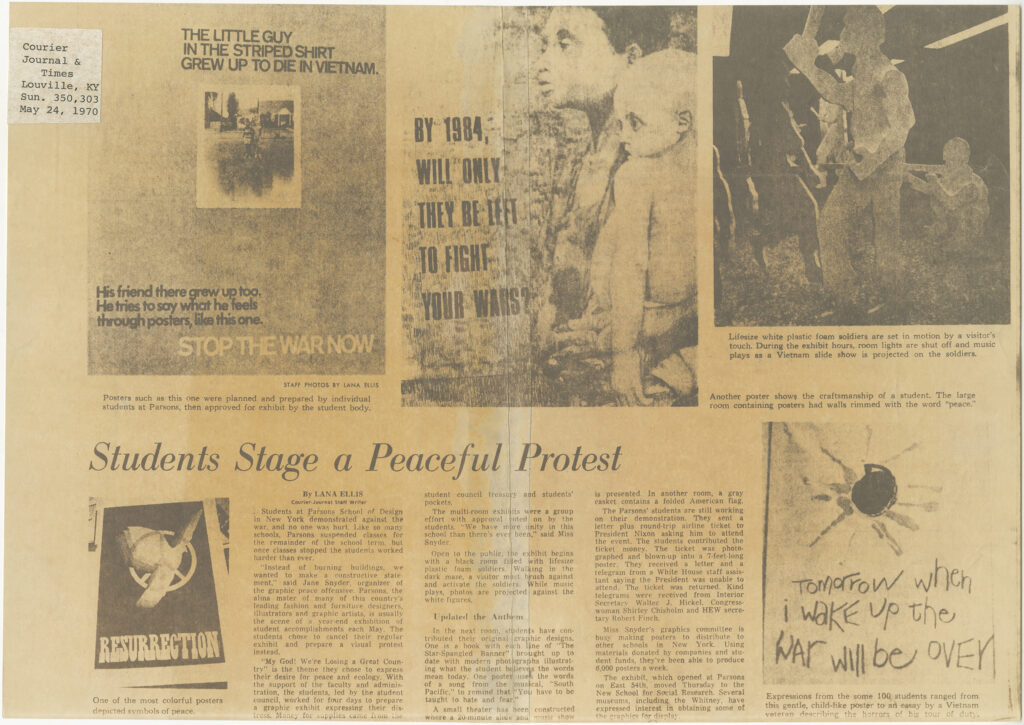
May 17, 1970
By mid-May, the administration is beginning to see the students’ activities downtown as disruptive. President Everett issues a notice prohibiting access to 65 5th Avenue by protesters, such as the high school students, outside the New School. He announces that he will seek an injunction against the strikers and orders doors closed at 10pm. Accounts suggest that there were different factions and points of view—those who disagreed with the overt political takeover and the disruption of academic life, and those who supported a narrowly anti-war agenda, wanting distance from the labor, civil rights, feminism and other issues in the mix. By the end of May, student presence is considered an occupation.
May 25, 1970 The police are called in to arrest the students, 18 of whom are charged with criminal trespass.
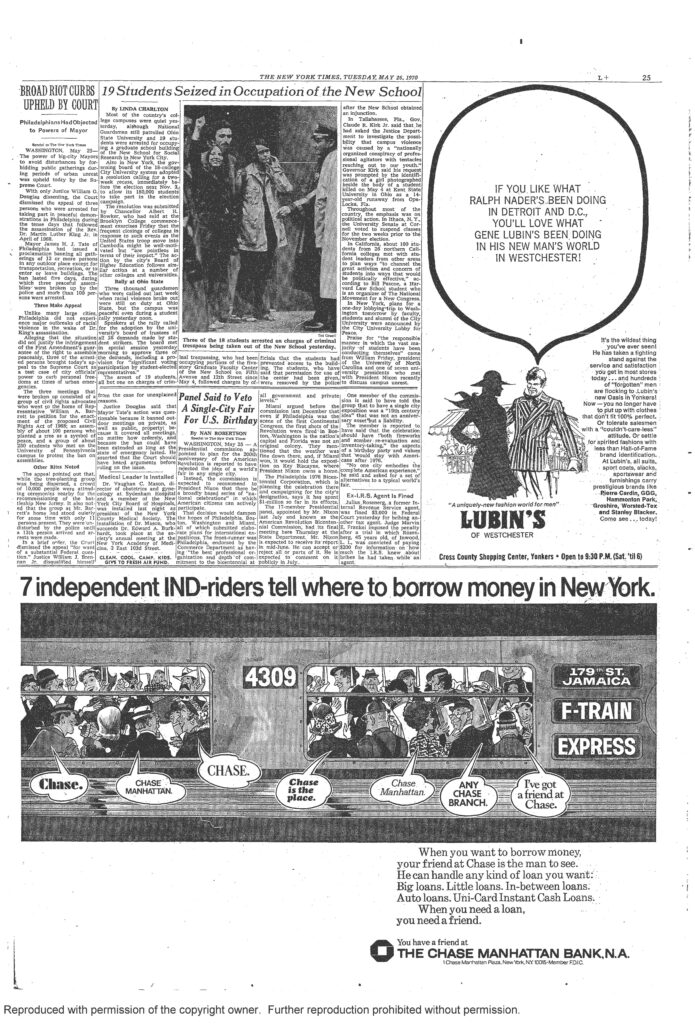
June 9, 1970
My God! We’re Losing a Great Country opens at 65 5th Avenue, presented by The New School Art Center. “If you see no other exhibition,” says critic Emily Genauer, “see this one.”
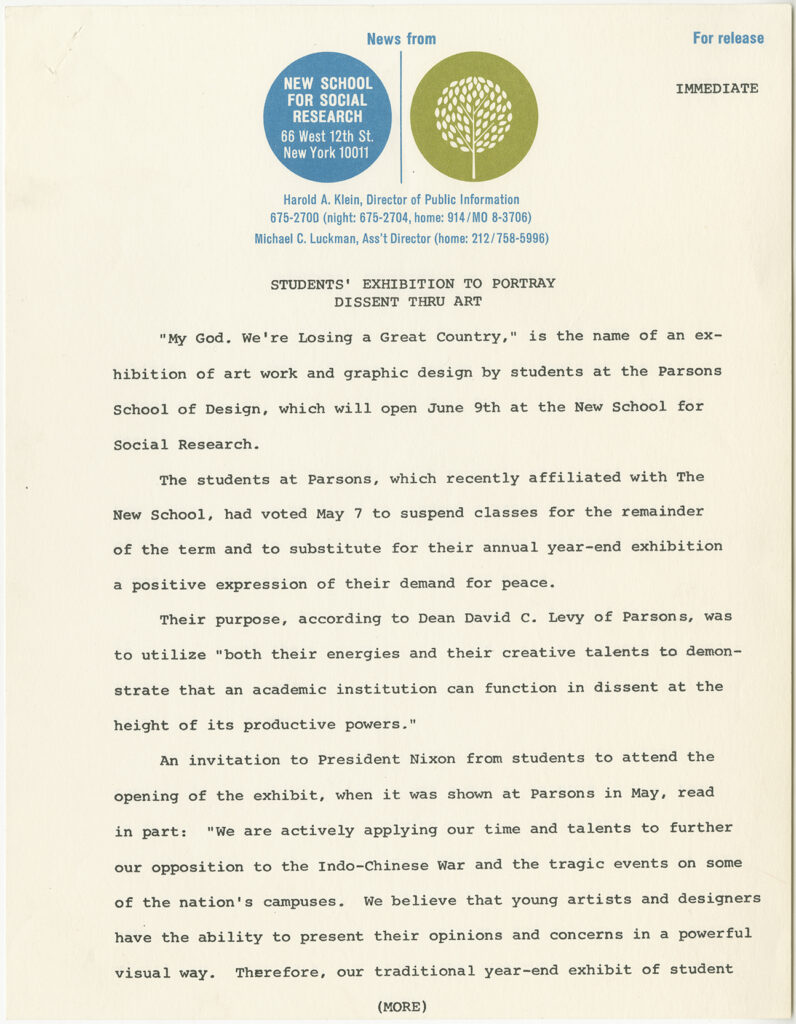
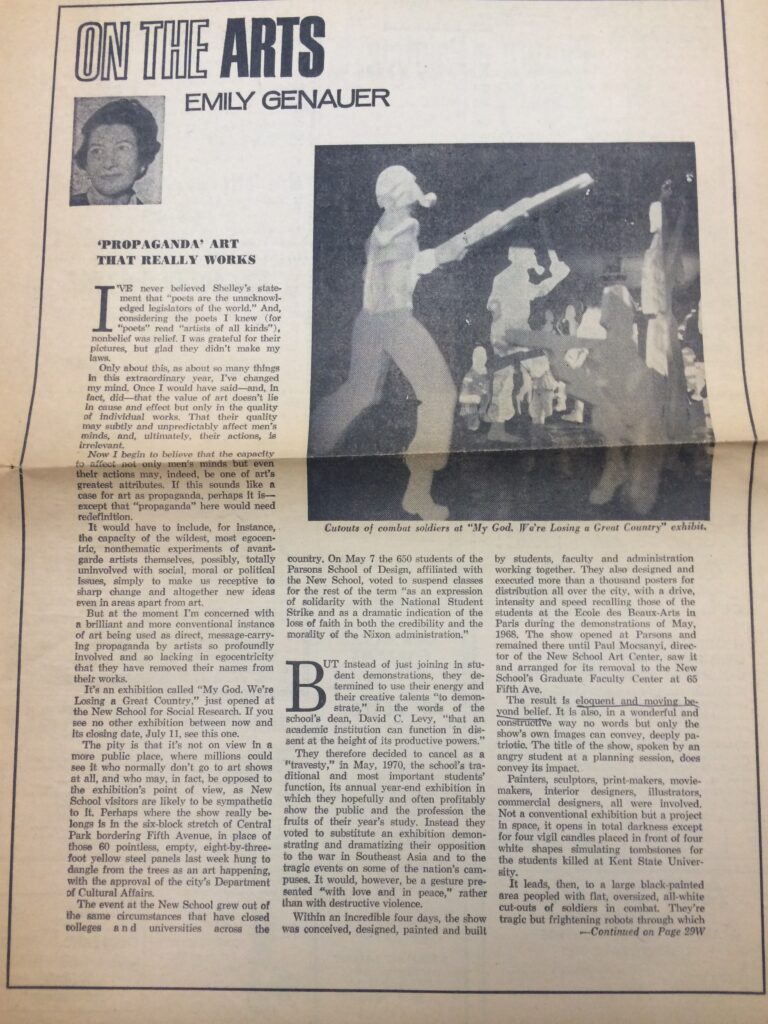
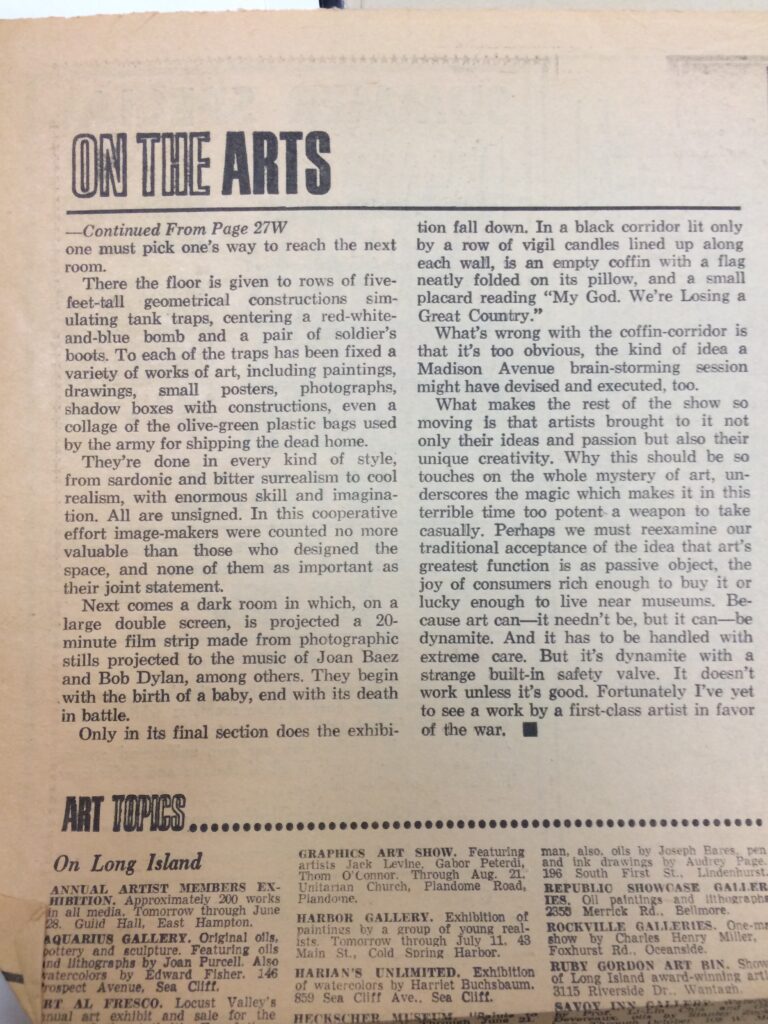
June 9, 1970
The New School Art Center’s programming, which included films, lectures and exhibitions, had not been without its detractors. Established in 1960 with a mission to represent the efforts of The New School to recognize art as a human and social endeavor, it had a history of presenting exhibitions with strong political and historical themes— Protest and Hope on Civil Rights and Vietnam in 1967 and an exhibition on art made by children and adults in the concentration camp, Terezin in 1968. Just in March 1970, Arab students of the New School for Social Research decried an exhibition called Baghdad Gallows as Israeli-Zionist propaganda, demanding the chance to present an exhibition that displayed their point of view. After the My God! exhibition, the Center would go on to present the Hiroshima Panels, works by two Japanese artists who were eyewitnesses to the atomic holocaust, from October to December, 1970.
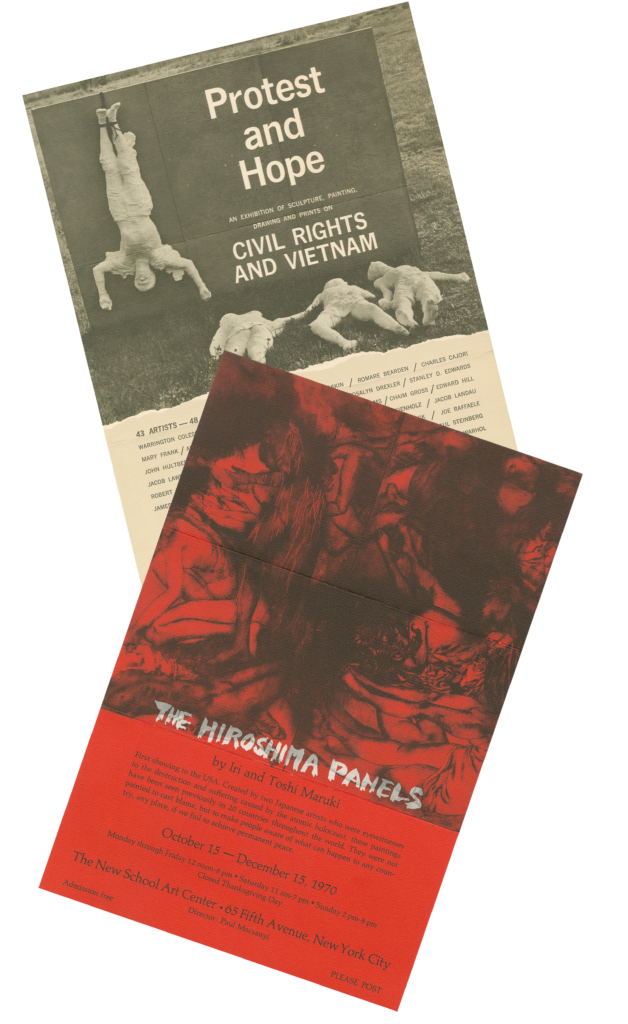
Protest and Hope: An Exhibition of Sculpture, Painting, Drawing and Prints on Civil Rights and Vietnam.1967. The New School Art Center records.
The Hiroshima Panels by Iri and Toshi Maruki. 1970. The New School Art Center records.
June 9- July 11, 1970
My God! We’re Losing a Great Country is on view. About a thousand posters are also distributed all over the city. Entering the exhibition, visitors are met with four vigil candles for the dead in Ohio in front of tombstone-like structures. They must walk through cut-outs of soldiers in combat in order to reach the rest of the exhibition. Tank trap-like structures display paintings, posters, and photographs. There are no attributions, no authors. Music by Joan Baez and Bob Dylan accompanies a film projection of photographs. The final section of the exhibition is a hallway with an empty coffin with a flag folded on its pillow and a small placard reading “My God! We’re Losing a Great Country.” Didactic and propagandistic, it is also recognized as sincere and eloquent, with a power to stimulate change.
